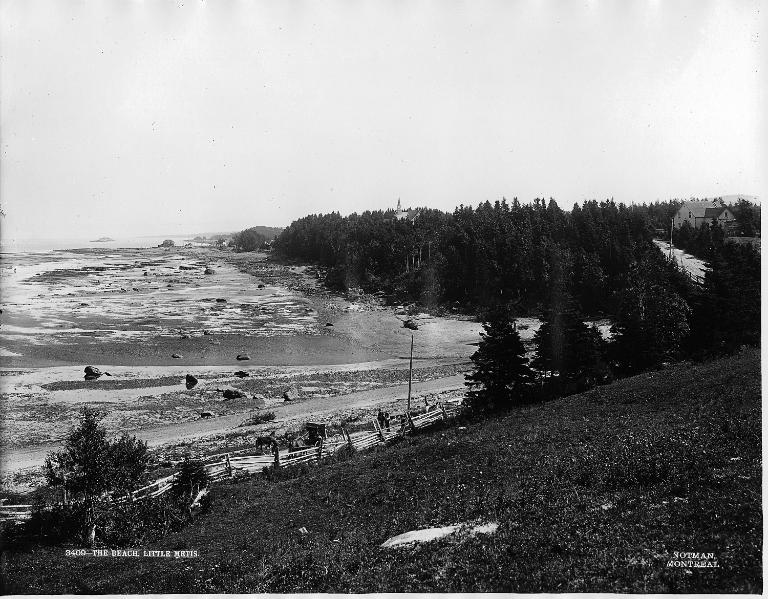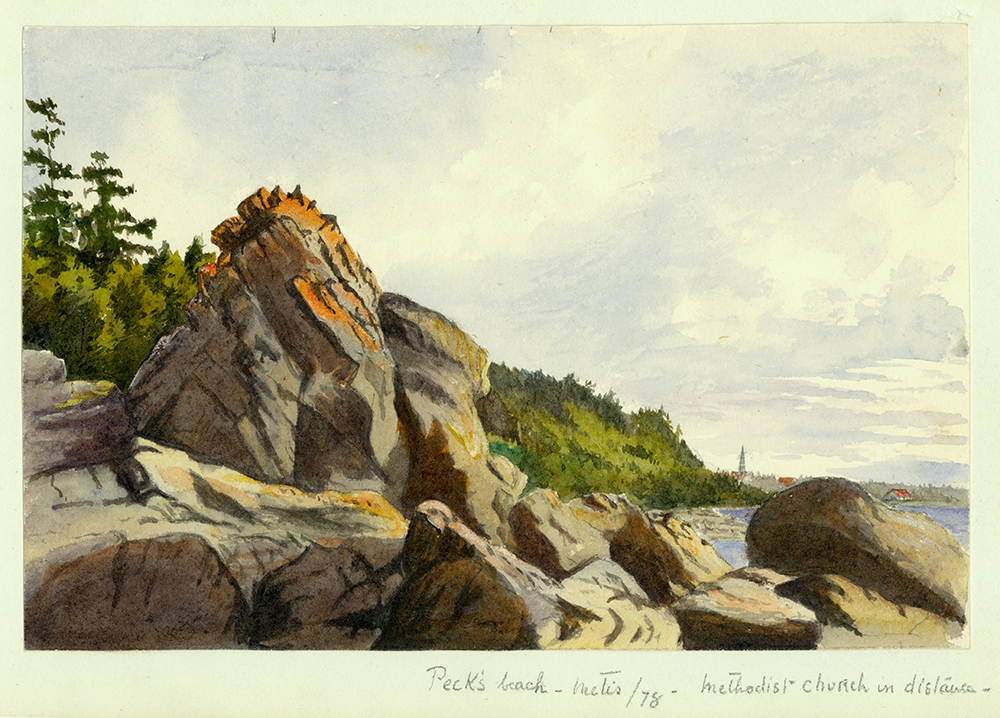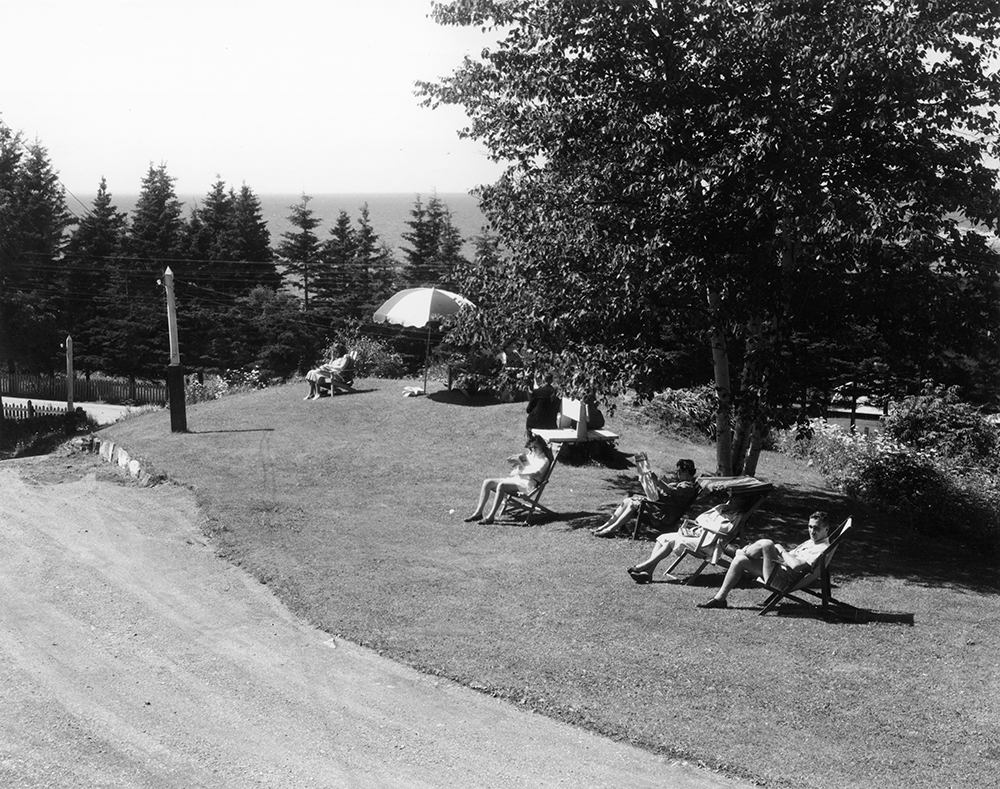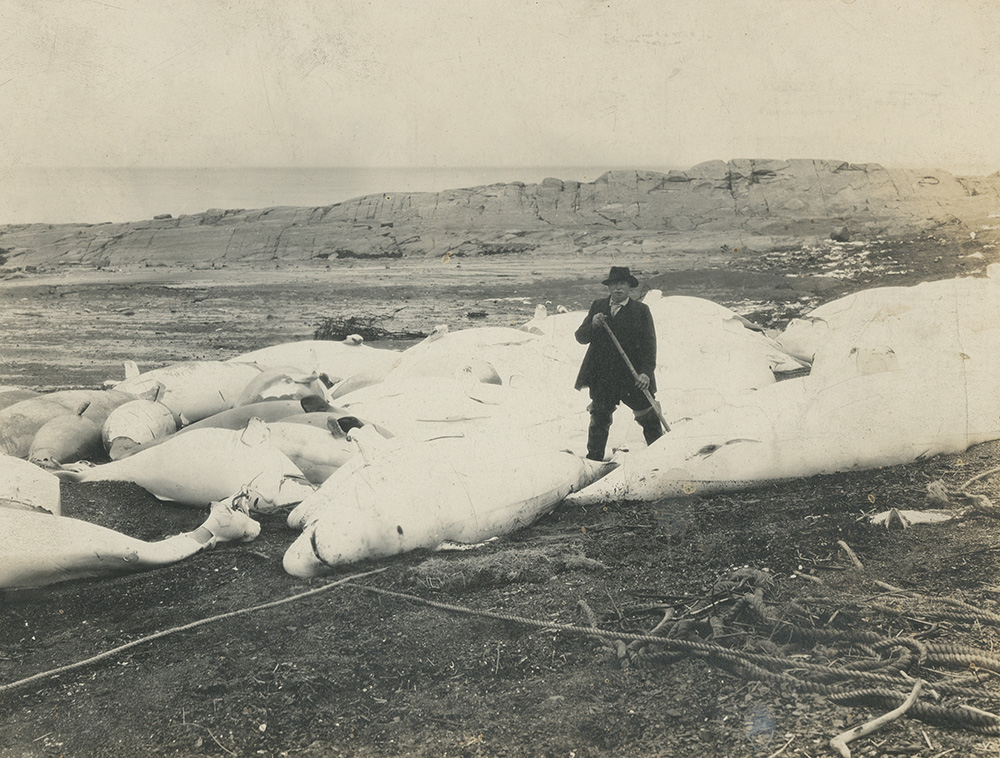Natural History of Metis – Scientists at Work on the Shoreline, the Forest and the Fields
Metis has long been a laboratory for scientific exploration. The pioneer work of scientists has been undertaken on the shoreline and in the fields and forests nearby. Published in scientific journals and books, their work enjoyed a global audience. Some of the material collected has found its way into the display cases of museums and research collections of universities.

The rock outcrops along the shoreline in Metis were a rich place for geologists to study the geology of the region.
The first scientist of note to traverse the region was William Logan, founder of the Geological Survey of Canada. His sketchbook has the earliest drawings of the falls on the Metis River, confirming that its geology was of special interest to him as he began his ambitious survey of the Gaspe Peninsula. Logan’s staff followed his path. They inventoried the flora and fauna of the area, providing a useful baseline of information on the species to be found in Metis at the beginning of the colonization of the region and before forestry and farming completely altered the ecosystems.

Anna Lois Dawson was a talented artist whose watercolours illustrate the rocks and plants found in Metis.
William Dawson dedicated his summer holidays to field work. It was in Metis where he was most productive. The study in his Metis cottage was where he wrote many of the articles and books and natural history talks that made him the country’s preeminent voice of science.

Metis became known as the ideal destination for those seeking fresh air and a temperate climate. Getting outside was a favourite pastime for those in search of rest and recovery.
Today’s scientists no longer simply inventory species. They observe the rise and decline of species and their adaptation to the arrival of invasive populations. Climate change has transformed the St. Lawrence estuary into a living laboratory. A new generation of experts is observing the shoreline, intertidal and marine environments with growing interest and sometimes disturbing results.


